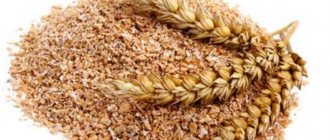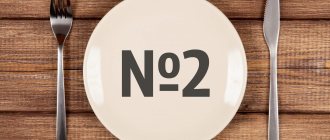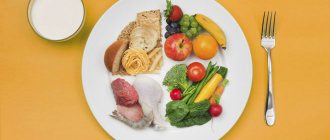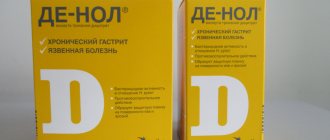The diet of modern man is very far from ideal. An excess of easily digestible carbohydrates, fast food and snacks, alcohol, flavor enhancers and preservatives, combined with a lack of cereals, fruits and vegetables, lead to excess weight gain, metabolic disorders and gastrointestinal problems. At the same time, many of us do not think about the fact that most bad habits “come from childhood.” And vicious eating habits are no exception.
Proper nutrition in childhood is the key to the absence of health problems in the future. Pediatric specialists have proven that adipose tissue cells, which provide energy balance, are formed mainly during the first years of life. Therefore, one of the main prerequisites for future obesity is an insufficiently balanced diet in childhood.
In addition, the child’s diet becomes a kind of “foundation” for his full life, physical and mental development, and immune support. Therefore, nutrition in childhood should be as thoughtful as possible, and also provide the body with a sufficient amount of all necessary substances, minerals and vitamins.
Baby food: rules and features
Content:
- Baby food: rules and features
- Universal diet for children
- Diet for children with allergies
- Diet for rotavirus infection
- Diet for overweight children
When planning your child's diet, you should take into account several general rules. They are the basis of the most effective diet for children.
First of all, do not forget that a growing body’s need for nutrients is an order of magnitude higher than that of adults, so the basis of baby food should be natural products. In addition, the metabolic rate in children is one and a half to two times higher than in adults.
Therefore, in order for the baby to grow, develop mentally and physically, build muscle mass and fully use his potential, the energy value of his daily diet must be at least 10% higher than his energy expenditure.
Parents should take into account that children do not yet have the skills and motivations that would push them to make conscious healthy eating choices, therefore, it is the responsibility of adults to develop healthy eating habits in children. Moreover, parents should instill in their children a love of healthy eating by their own example.
In addition, you need to listen to the general recommendations of nutritionists:
- No coercion! You should not force your child to sit at the table just because it is “usual” lunch or dinner time. No food will be used for future use “to the accompaniment” of the hysteria and tears of a child who has been torn away from the game.
- Do not “feed” your child when he is sick. During this period, all the forces of his body are aimed at fighting the disease; therefore, force-feeding is prohibited. When forming a diet for a sick child, one should be guided solely by his appetite.
- Refuse to eat rich and high-calorie foods in favor of fractional meals, that is, in small portions five to six times a day.
- Protein foods should be present in the child's diet daily. At the same time, you shouldn’t get too carried away - an excess of proteins is just as dangerous as their lack.
- Fermented milk products should be given to children as a separate meal and not in combination with other foods.
Restoring digestion immediately after vomiting
Vomiting is a warning sign!
This unpleasant phenomenon is accompanied by side effects such as disruption of water-salt balance and loss of large amounts of fluid by the body. Before feeding the child, it is necessary to restore this balance, if medical tactics do not provide for other measures. Until these indicators are brought back to normal, feeding may be inappropriate and even harmful to children's health.
It is recommended to replenish lost fluid and additionally take medications containing salt, soda, calcium, and glucose to replenish lost nutrients. These may be medications such as Regidron, Glucosolan, Oralit. Water-salt solutions prepared from them give 1-2 tsp. for babies, older children – 1-2 tbsp. spoons at a time. Required volume:
- Children under one year old – 150-200 ml per kg of weight per day.
- For children over one year old – 120-170 ml per kg of weight.
It is better to drink sweet tea, rosehip infusion, still mineral water, rice water, dried fruit compote. If the child does not show appetite, you can get by with these measures for the next 5-6 hours.
Universal diet for children
What diet should form the basis of a child's diet? Gastroenterologists are convinced that the most universal option that can be used to feed healthy children is table No. 5.
This diet is usually used for diseases of the liver and pancreas, but it provides sufficient calories and normal levels of proteins and carbohydrates, with limited fat and salt.
Table No. 5 provides for fractional meals 5-6 times a day, while long breaks between meals are not allowed and spicy, sour, canned and fried foods are prohibited.
When creating a menu you can use:
- Biscuits, homemade baked goods in limited quantities. Fresh bread and puff pastries are prohibited.
- Vegetable soups, with the addition of cereals, borscht. Mushroom, meat and fish broths are excluded.
- Beef, chicken, turkey, and boiled or baked rabbit. At the same time, duck meat and any offal are prohibited. Children's diets should also not contain sausages and canned meat, both industrially and home-produced.
- Boiled or baked fish. Smoked fish, salted fish and canned food should be excluded.
- Dairy products. At the same time, try not to buy yoghurts in stores, but prepare them at home using starter culture. Sweet cereals with milk are allowed. At the same time, limit the presence of cream, full-fat milk and cheese in your diet.
- Steam omelette. Hard-boiled and scrambled eggs are prohibited.
- Raw, boiled and stewed vegetables. At the same time, we exclude fried, pickled and pickled vegetables from the diet.
- Compotes, jelly, juices from fresh fruits of not too sour varieties. It is worth choosing those gifts of nature that are common in your area.
- Marshmallows, marmalade, nougat. We exclude chocolate from the diet.
For example, for breakfast you can serve your child cottage cheese with fruit and tea with cookies. After two hours, offer your baby a baked apple. For lunch, prepare vegetable soup, porridge and steamed cutlets. The afternoon snack will consist of not too strong tea with sugar and cookies. Finally, your child will have boiled potatoes with baked fish for dinner.
How to treat poisoning in a child?
Therapy consists of main areas:
- Prevent the absorption of poison into the blood;
- Application of an antidote (antidote);
- Removing toxic compounds from the body;
- Treatment of symptoms of poisoning.
Difficulties in treating children under one year of age are associated with insufficient function of the kidneys and liver, the organs responsible for neutralizing toxins and removing them from the body.
It is important to know
Regardless of the type of plant poison, it is necessary to begin treating poisoning in children with gastric lavage.
The volume of water required for rinsing: 3 years - 6 years: take 16 ml of water per kilogram of child’s weight, 7 years and older - 14 ml per kilogram of weight. After emptying the stomach of food debris, give the child Enterosgel sorbent.
Poisoning in children should be treated as quickly as possible. Before the doctor arrives, it is necessary to compensate for the fluid lost through vomiting and diarrhea - to give the baby a drink. This will also quickly remove toxins from the body. Drinks are given a few teaspoons every 5-10 minutes.
Pharmaceutical solutions (rehydron and others), boiled water, carrot-rice or raisin infusions are used.
Fever in case of poisoning in a child is eliminated by taking antipyretic drugs.
If the baby is breastfed, in addition to milk, you should give him boiled water. And after some time after food poisoning, you can return to your normal feeding regimen.
Food poisoning in a child with mushrooms, poisonous plants, and chemicals is treated in a hospital setting.
Diet for children with allergies
Childhood allergies are a serious challenge for any family. Dermatitis and diathesis, conjunctivitis, allergic rhinitis, urticaria - all these manifestations of hypersensitivity to certain substances can seriously complicate the life of both the baby and his parents.
However, even a strict diet for allergies should be complete and varied. It should be borne in mind that all products are divided according to the degree of allergenicity.
Thus, among the products with the maximum allergenic potential, milk and eggs should be highlighted. High probability of allergies to citrus fruits, strawberries, raspberries and wild strawberries. Wheat and rye can cause an undesirable reaction; chocolate, coffee, cocoa, honey and nuts are also allergens.
Beef, legumes, potatoes and beets have an average allergenic potential. Among fruits, peaches, apricots, blueberries, bananas and black currants can cause allergies in some cases.
Finally, fermented milk products, some types of meat (horse meat, rabbit, lean pork and lamb, as well as turkey), green pears and apples, parsley and dill, as well as cabbage (both white and cauliflower), and zucchini have minimal allergenic potential. , cucumbers and yellow cherries.
It is products with low allergenic potential that should form the basis of the menu for allergies. There are many options for preparing them:
| Meat | Steam cutlets and meatballs, meatballs, stew |
| Porridge | Salty and sweet buckwheat and oatmeal porridge, with caution rice porridge |
| Vegetables | Vegetable stew, steamed vegetables, oven-baked vegetables, vegetable cutlets |
| Fruits | Seasonal fruits, fresh (without peel) and baked, compotes |
| Beverages | Weak green and white tea without flavorings or any flavoring additives, still mineral water, compotes and fruit drinks made from permitted fruits |
How to avoid poisoning?
- The child should be taught to wash his hands after visiting the toilet and before eating. Eat only washed vegetables and fruits;
- parents follow the rules for storing and preparing food;
- you cannot buy products of dubious quality in spontaneous markets and stores;
- you should not cook for future use in the summer months;
- when bathing children in ponds, it is worth remembering that pathogens of intestinal infections can live there;
- do not allow children to pick berries and mushrooms without adult supervision;
- do not feed mushroom dishes to children under 7 years of age;
- Medicines and various chemicals must be stored exclusively out of the reach of children.
Health to you and your child!
Diet for rotavirus infection
Rotavirus infection is better known as “stomach flu” and “intestinal flu”. This is a disease that affects not only children, but also adults, but most often it occurs in children under two years of age. The main manifestations of the disease are problems with the gastrointestinal tract (abdominal pain, diarrhea, vomiting), as well as a sharp increase in temperature.
Unfortunately, today there are no special medications that could effectively resist rotaviruses. The main treatment for this infection is diet. Only it helps relieve inflammation in the intestines and relieve the baby of unpleasant symptoms.
There are a number of fundamental rules for feeding children with rotavirus infection:
- Avoid dehydration. As a rule, due to the specific taste, children are not very willing to drink rehydron, which allows them to compensate for the loss of fluid and minerals, so prepare compote, weak tea, chamomile or mint decoctions.
- Don't force your child to eat. If there is no appetite, let the baby just drink for now.
- Give food and drink often and in small portions so as not to cause vomiting.
Now a few words about what the diet should be for rotavirus infection in children. In the first two to three days, the main task is to normalize stool. The baby's diet should consist of cereals without adding oil (rice has proven itself best), as well as stewed apples. Once the severity of symptoms has subsided, other foods can be introduced:
- Biscuits, homemade crackers (use only white loaf pulp).
- Low-fat broths. It's better to cook vegetable. If you still prepare broth using meat or fish, then only secondary broth is allowed.
- Soups with the addition of boiled cereals.
- Steamed omelette.
- Steamed chicken or turkey cutlets, boiled fish (hake, cod, pollock).
- Mashed potatoes without adding oil.
On the third or fourth day, fermented milk products can be introduced into the child’s menu, which will normalize the intestinal microflora.
Please note that during the acute course of the disease and during recovery, foods that can aggravate gastrointestinal problems should be completely excluded from the diet.
Milk, fatty varieties of cheese and cottage cheese, honey, sugar and any sweets, brown bread, baked goods, any fresh baked goods, pasta, dumplings, dumplings, legumes in all forms, fatty meats and fish, smoked meats, sausages, chocolate are prohibited , cocoa, coffee, black tea.
The baby can be transferred to the general diet only 10-14 days after the symptoms of the disease have completely disappeared.
What is the danger of the disease
At the initial stage, rotavirus infection is accompanied by sneezing and fever, so it can easily be confused with ARVI. Diagnosing this disease is quite difficult. But it is important to identify it as early as possible, because if it drags on, the infection can become severe and cause a lot of unpleasant symptoms.
Transmission of the virus of this disease occurs quickly. Infection with it can occur not only during communication with a carrier, but also during contact with hygiene and household items, as well as through food and water.
When a virus enters the body of a healthy person, it immediately penetrates the digestive system.
First of all, it enters the small intestine, then the large intestine. This results in diarrhea. What signs are accompanied by rotavirus intestinal infection:
- increased body temperature;
- the occurrence of diarrhea;
- severe pain in the abdominal area;
- state of weakness and malaise.
The main danger of rotavirus infection is that diarrhea causes dehydration. Doctors use a special diet to completely correct dehydration and completely eliminate it.










